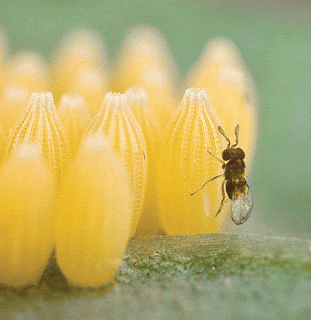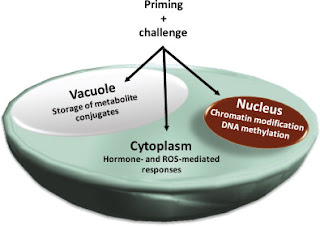Biology concepts – innate immunity, adaptive immunity, defense mechanisms, endotoxin
Immune systems of defense can be very evolved, as in humans. Ours make use of two specific circulatory systems (blood and lymph), has organs designed to aid their generation and functions (lymph nodes, thymus, bone marrow, and spleen), and has mobile cells designed only to patrol and protect. These components function in both innate and adaptive immune cascades and webs.
Other organisms’ defense systems are not so intricately developed, but still deserve respect. Arthropods (insects, crustaceans and the like) have a highly developed innate immune system, with circulating immune cells of several types.
Mollusks (clams, octopods, and the like) also have an innate immune system with a few types of circulating immune cells. However, immune responses don’t have to be only from circulating cells. Sometimes they are proteins that kill bacteria, or merely surrounding the pathogen and keep it from the host cells. Many kinds of mollusks protect themselves by encapsulating invading parasites in a solid prison of shell-like material -we call them pearls! Any mollusk with a shell can make pearls – even snails.
The Agnathans (jawless fishes, such as lampreys and hagfish) seem to have an adaptive system all their own. It has features similar to the adaptive system of jawed vertebrates, but the way that foreign antigens are recognized is completely different. The lampreys and similar organisms use a different kind of receptor molecule on immune cells. The receptors are variable, but not in the same manner as mammalian immunoglobulins. In jawed vertebrates, the antibody genes rearrange to form the basis of both circulating and receptor immunoglobulins.
This "similar but different" adaptive system would indicate that specific immune responses have sprung up at least twice in evolutionary history. I say at least twice because it is beginning to look like insects and worms may have a sort of adaptive system as well. Earthworms will reject grafts from other earthworms, and will reject a second graft faster than the first graft. So, we see that most organisms have elaborate ways to defend themselves.
This brings us back to “The Happening,” and the attack on the humans ---– it turns out that it was the trees trying to protect themselves from being overrun by mankind! Plants have defenses? Plants can sense attack and respond? Yep.
Plants don’t have immune cells, those that move around and whose job it is to protect and attack. But they do have immune defenses against pathogens, and pretty sophisticated ones at that.
This is similar to mammalian PRR systems for PAMPs (pathogen associated molecular patterns), the toll-like receptors for example. When triggered, resistance molecules and plant hormones are released to make the plant less appealing to the pathogen, or to interrupt the infection process. There are many of these resistance mechanisms, we can talk about a couple below and more in the future.
On the other hand, plant ETI (Effector Triggered Immunity) is signaled by the effector molecules released by the microbes that manage to set up shop inside plant cells or tissue. ETI is really just an increase in the amplitude of the same response molecules seen in PTI, plus another defense mechanism, called the hypersensitive response.
This response is much like the apoptosis (programmed cell death) that virally-infected animal cells may initiate. It is a small loss in order to protect the whole organism. Recent evidencesuggests a central role for S-nitrothiols (nitric oxide linking cysteines) in both turning on and limiting the hypersensitive response by controlling the amount of NADPH oxidase, an enzyme that produces reactive species. We will see next week that this suicide mechanism is very old.
Reactive species for cell suicide is cute, but plant responses get even cuter. When threatened by some herbivorous insects, 2012 research shows that plants can call in mercenaries to help. Members of the cabbage family are troubled by the larvae (caterpillars) of the large cabbage butterfly (Pieris brassicae). When this butterfly lays its eggs on a black mustard plant, the plant sends out a chemical signal that attracts two species of wasps (Trichogramma brassicae and Cotesia glomerata).
Even more in support of the idea that plants have a form of adaptive response is the discovery that they have an immune memory of sorts. In 2009, researchers at the U. of Chicago found that when attacked by a certain bacterium, Arabidopsis plants (of the mustard family, a very common plant in research) make a chemical at the site of attack called azelaic acid.
The scientists found that this compound can stimulate a faster and stronger immune response when and if the plant was ever attacked again. Azelaic acid acts by stimulating salicylic acid (a compound very similar to aspirin) production in the plant directly, and by stimulating a newly discovered protein called AZ11. The increased salicylic acid then stimulates the defense mechanism.
More recent work (2012) in the same field has identified five additional compounds from Arabidopsis that also prime immune defenses. These new compounds work by inactivating enzymes that break down salicylic acid; the plant is therefore always ready to initiate a defense. These natural chemicals may be important for agriculture in that crops could be sprayed with a primer and be ready for a quick and strong response if they are ever attacked.
So animals and plants have independently developed immune responses, including adaptive memory and host cell death mechanisms. Or have they been independent?
The S-nitrosylation regulatory step in the production of reactive species is conserved (the same function, in this case mediated by the same amino acids in similar proteins) in animals, so we and they have developed a similar control – is it conserved from an ancient time before plants and animals diverged? Has the same system developed independently two time – unlikely, many orthologous systems exist, but nature is hit and miss, it rarely twice stumbles upon exactly the same way to do something. The adaptive systems developed by the jawed and jawless fishes may be an example of this. They do much the same things, but through different mechanisms. Perhaps plants and animals shared information at some point in time – horizontal gene transfer, like we talked about a long time ago?
Plants and insects can protect themselves and can adapt to different pathogens, so we have learned not to assume humans are so special. How about if we take another step along this line next week? Can bacteria protect themselves? Do they need to?
For more information or classroom activities, see:
Invertebrate immune systems –
pearl formation –
plant defense/immune responses –





